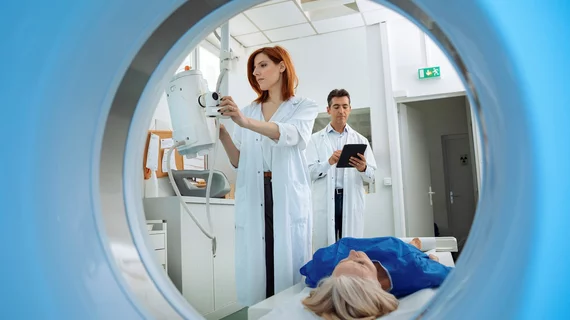AI in radiology is just getting started, but these 4 lessons can help practices prepare
Radiology departments are just beginning to deploy artificial intelligence tools in real-world clinical practice. But learning from these early adopters can help pave the way for others in the specialty.
That’s what Massachusetts General Hospital imaging experts said in a new opinion piece published Saturday in the Journal of the American College of Radiology. Practices of the future will likely be outfitted with multiple AI tools, presenting a new and challenging experience for clinicians.
Tarik K. Alkasab, MD, PhD, and Bernardo C. Bizzo MD, PhD, both with the Boston health giant, hope reports from those on the front lines can benefit others who may run into similar experiences.
“As a specialty, we are just at the beginning of learning best practices for this new work, and we will need to both communicate among ourselves and with the vendors who support us to develop standard methods for incorporating them comfortably into our practice,” Alkasab and Bizzo wrote.
Below are takeaways from their piece, which can be read in full here.
1. Some groups are using AI to facilitate imaging orders, which has been well-received by radiologists and referring providers alike. These tools may be nearly invisible to rads, the authors noted, but have important implications for future reliance on clinical decision support systems.
2. Artificial intelligence is creating an entirely novel kind of work for rads, who may be responsible for managing new data streams. Radiology departments will need frameworks for helping imaging experts determine who should have access to which specific data points.
3. New technology requires continuous monitoring and updating, including processes and software to track performance. Early adopters have reported gaps in currently available applications to achieve these goals. Radiology departments will need to identify what metrics to access and develop tools to do so.
4. Practices must assess if the value of AI outweighs its maintenance costs. This may become the top issue for radiology departments but is easier said than done, the authors noted. Prospective cost-benefit analyses would be ideal, but there are few tools on the market to do so. Rads should communicate this gap with vendors.

